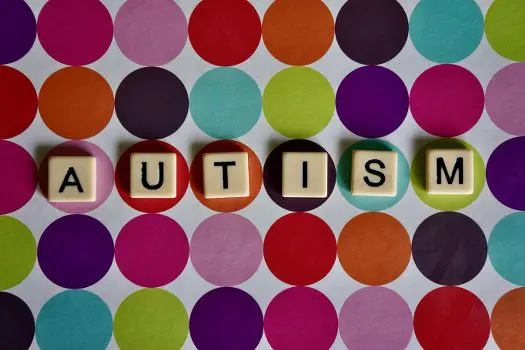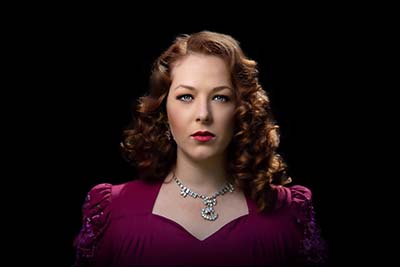Exploring Different Types of Autism
Autism, a complex neurodevelopmental disorder, encompasses a broad spectrum of experiences and challenges. Within this spectrum, there exist various types of autism, each with its own set of characteristics and nuances. By delving into the different types of autism, we can gain a deeper understanding of the diverse ways individuals on the spectrum experience the world.

Understanding the diversity within the autism spectrum is essential for fostering empathy, support, and inclusivity. Each type of autism presents unique characteristics and challenges, requiring tailored approaches to accommodate the specific needs of individuals. By embracing the strengths and individuality of individuals on the spectrum, providing early intervention, and promoting a supportive environment, we can create a world that celebrates the diversity of autism and empowers individuals to reach their full potential.
Different Types of Autism
As we explore the different types of autism, it is essential to recognize that each individual’s experience is unique. While these classifications provide a framework for understanding and diagnosing autism, it is crucial not to overlook the individual’s strengths, challenges, and specific needs. Tailoring support and interventions to meet these individual requirements is vital to promoting their overall well-being and success.
Among the different types of autism, it is important to note that individuals on the autism spectrum can exhibit a wide range of abilities and talents. By recognizing and nurturing these strengths, we can create opportunities for individuals on the spectrum to flourish and contribute to society.

Moreover, it is worth highlighting the importance of early detection and intervention for individuals with autism. The earlier autism is diagnosed, the sooner appropriate support and interventions can be provided.Speech Therapy, occupational therapy, and behavioral interventions, have shown promising results in improving communication, social skills, and overall functioning for individuals on the spectrum.
Autism Spectrum Disorder (ASD) is a term that encompasses a range of conditions characterized by challenges in social interaction, communication, and restricted and repetitive behaviors. As we navigate the spectrum, we encounter various types of autism, such as Asperger’s Syndrome, Pervasive Developmental Disorder-Not Otherwise Specified (PDD-NOS), and Childhood Disintegrative Disorder (CDD).
Asperger’s Syndrome, named after Austrian pediatrician Hans Asperger, is often considered a higher functioning form of autism. Individuals with Asperger’s Syndrome typically display average to above-average intelligence and have fewer challenges with language development. They may exhibit intense interests or obsessions in specific subjects and possess exceptional attention to detail. However, social interaction can be particularly challenging for individuals with Asperger’s Syndrome. Difficulties in understanding social cues, interpreting nonverbal communication, and forming meaningful Relationships are common. Despite these challenges, many individuals with Asperger’s Syndrome have unique abilities and contribute greatly to various fields such as science, Technology, engineering, and mathematics.
Among the different types of autism,PDD-NOS (Pervasive Developmental Disorder-Not Otherwise Specified) is a term used to describe individuals who display some but not all of the diagnostic criteria for autism. PDD-NOS is characterize by a wide range of symptoms and challenges that do not fit neatly into other specific autism classification. Individuals with PDD-NOS may have varying degrees of impairment in social interaction, communication, and restricted interests. They often exhibit overlapping symptoms found in other autism types, making it challenging to categorize them into a distinct group. The variability within PDD-NOS highlights the need for individualized support and interventions tailored to meet each person’s unique needs.
Childhood Disintegrative Disorder (CDD), also known as Heller’s Syndrome, is a rare and severe form of autism. It typically manifests in early childhood, around the age of 2 to 4 years, when a child experiences a significant loss of previously acquired skills and undergoes regression in various areas, such as language, social interaction, and motor skills. The loss of skills may occur rapidly, within a matter of months, and significantly impacts the child’s overall development. CDD is characterize by a profound decline in functioning and a marked deterioration in adaptive behaviors. The cause of CDD is still not fully understand , and more research is need to unravel its complexities.
Low Functioning Autism
Individuals with low functioning autism face profound difficulties in communication, social interaction, and daily functioning. Navigating their world can be an overwhelming task, both for these individuals and their families. However, by fostering empathy, providing appropriate support, and embracing inclusion, we can create an environment that enables individuals with low functioning autism to thrive and reach their full potential.
One of the defining characteristics of low functioning autism is the significant communication challenges individuals face. Verbal communication may be limit or absent, making it challenging for them to express their needs, desires, or emotions effectively. This communication barrier often leads to frustration and may result in individuals resorting to alternative methods to express themselves, such as nonverbal cues, gestures, or augmentative and alternative communication (AAC) systems. Understanding and recognizing these unique communication methods are essential for building effective and meaningful connections with individuals with low functioning autism.

Social interaction is another area that poses significant challenges for individuals with low functioning autism. They may struggle to understand social cues, nonverbal communication, and the unwritten rules of social engagement. This difficulty often results in social isolation and a sense of being misunderstand . It is crucial for society to foster empathy and understanding, creating an inclusive environment that embraces individuals with low functioning autism and provides opportunities for meaningful social connections. By promoting acceptance, patience, and teaching social skills through targeted interventions, we can bridge the social gap and empower individuals with low functioning autism to build fulfilling relationships.
Daily functioning can be a complex task for individuals with low functioning autism. They may require support and assistance to navigate essential activities such as personal care, household tasks, and time management. Establishing routines, providing visual supports, and implementing structured environments can greatly assist individuals with low functioning autism in managing their daily lives. Tailored interventions, such as occupational therapy and life skills training, can play a vital role in enhancing independence and fostering self-confidence. By recognizing and addressing their specific support needs, we can empower individuals with low functioning autism to develop essential life skills and lead fulfilling lives.
It is crucial to emphasize that every person with autism, regardless of their functioning level, deserves understanding, acceptance, and access to resources that enhance their quality of life. By fostering empathy and awareness, we can create a more inclusive society that embraces the strengths and potential of individuals with low functioning autism. Together, let us pave the way for a future where individuals with low functioning autism are recognize for their unique contributions and provided with the support they need to thrive.
FOUND ME QR Code Medical Bracelet: Empowering Safety and Communication
In the realm of autism, medical alert bracelets have emerged as a powerful tool to address safety concerns and enhance communication.
One innovative solution that has garnered attention is the FOUND ME QR Code Medical Bracelet. This advanced bracelet leverages technology to provide instant communication with emergency contacts and access to critical information, ensuring the well-being and safety of individuals with autism.

The FOUND ME QR Code Medical Bracelet revolutionizes the way emergency communication and medical information is convey. By simply scanning the QR code on the bracelet, first responders, medical professionals, and individuals in the community gain immediate access to crucial details about the wearer’s condition. This real-time access enables swift and informed decision-making in emergency situations, bridging the communication gap that individuals with low functioning autism may encounter.
The bracelet’s QR code links to a comprehensive digital profile that can be customized with essential medical information (child with autism), emergency contacts, and additional details specific to the individual’s needs (scared of noises…and crowds…). This digital profile ensures that even in high-Stress situations, accurate information is readily available to support effective care and response.


FOUND ME app
Moreover, the FOUND ME QR Code Medical Bracelet offers a sense of Security and reassurance to both individuals with autism and their loved ones. Families can feel confident knowing that if their loved one encounters a challenging situation or becomes separated, the bracelet serves as a lifeline. With the FOUND ME app, they are notified the second the QR code is scan and an instant multilingual secure chat or Video chat can be start right away…while real-time location can be share, facilitating quick reunions and peace of mind.
By integrating technology into medical bracelets, the FOUND ME QR Code Medical Bracelet represents a significant leap forward in safety and communication for individuals with autism.
This innovative solution helps bridge gaps in understanding, facilitates effective emergency response, and empowers individuals to navigate the world with greater confidence and security.
If you want to know more about FOUND ME and how it helps Everyone and als everything you care for visit www.foundme.com
Faq’s
Q1: What are the different types of autism discuse in the blog?
A1: The blog discusses different types of autism, including Asperger’s Syndrome, Pervasive Developmental Disorder-Not Otherwise Specified (PDD-NOS), Childhood Disintegrative Disorder (CDD), and low functioning autism.
Q2: How does Asperger’s Syndrome differ from other types of autism?
A2: Asperger’s Syndrome is often consider a higher functioning form of autism. Individuals with Asperger’s Syndrome typically have average to above-average intelligence, fewer challenges with language development, intense interests or obsessions in specific subjects, and exceptional attention to detail. However, they often struggle with social interaction, understanding social cues, interpreting nonverbal communication, and forming meaningful relationships.
Q3: What is Pervasive Developmental Disorder-Not Otherwise Specified (PDD-NOS)?
A3: PDD-NOS is a term used to describe individuals who display some but not all of the diagnostic criteria for autism. It is characterized by a wide range of symptoms and challenges that do not fit neatly into other specific autism classifications. Individuals with PDD-NOS may have varying degrees of impairment in social interaction, communication, and restricted interests.
Q4: What is Childhood Disintegrative Disorder (CDD)?
A4: Childhood Disintegrative Disorder, also known as Heller’s Syndrome, is a rare and severe form of autism. It typically manifests in early childhood, around the age of 2 to 4 years, when a child experiences a significant loss of previously acquired skills and undergoes regression in various areas such as language, social interaction, and motor skills. The cause of CDD is still not fully understand.
Q5: How does the FOUND ME QR Code Medical Bracelet help individuals with autism?
A5: The FOUND ME QR Code Medical Bracelet is an innovative solution that enhances safety and communication for individuals with autism. By scanning the QR code on the bracelet, first responders, medical professionals, and individuals in the community can instantly access crucial details about the wearer’s condition and medical information. This real-time access enables swift and informed decision-making in emergency situations, bridging the communication gap that individuals with low functioning autism may encounter. The bracelet also offers a sense of security to both individuals with autism and their loved ones by serving as a lifeline and facilitating quick reunions if they become separated.
Q6: What are some of the challenges faced by individuals with low functioning autism?
A6: Individuals with low functioning autism face profound difficulties in communication, social interaction, and daily functioning. Verbal communication may be limited or absent, making it challenging for them to express their needs, desires, or emotions effectively. They may also struggle to understand social cues, nonverbal communication, and the unwritten rules of social engagement, resulting in social isolation and a sense of being misunderstood. Daily functioning tasks such as personal care, household tasks, and time management can be complex and may require support and assistance.
Q7: How can society support individuals with low functioning autism?
A7: Society can support individuals with low functioning autism by fostering empathy, acceptance, and providing access to resources that enhance their quality of life. Creating an inclusive environment that embraces individuals with low functioning autism and provides opportunities for meaningful social connections is crucial. Teaching social skills through targeted interventions, establishing routines, and implementing structured environments can greatly assist individuals with low functioning autism in managing their daily lives. Tailored interventions, such as occupational therapy and life skills training, can also play a vital role in enhancing independence and fostering self-confidence.
{
“@context”: “https://schema.org”,
“@type”: “FAQPage”,
“mainEntity”: [{
“@type”: “Question”,
“name”: “What are the different types of autism discussed in the blog?”,
“acceptedAnswer”: {
“@type”: “Answer”,
“text”: “The blog discusses different types of autism, including Asperger’s Syndrome, Pervasive Developmental Disorder-Not Otherwise Specified (PDD-NOS), Childhood Disintegrative Disorder (CDD), and low functioning autism.”
}
},{
“@type”: “Question”,
“name”: “How does Asperger’s Syndrome differ from other types of autism?”,
“acceptedAnswer”: {
“@type”: “Answer”,
“text”: “Asperger’s Syndrome is often considered a higher functioning form of autism. Individuals with Asperger’s Syndrome typically have average to above-average intelligence, fewer challenges with language development, intense interests or obsessions in specific subjects, and exceptional attention to detail. However, they often struggle with social interaction, understanding social cues, interpreting nonverbal communication, and forming meaningful relationships.”
}
},{
“@type”: “Question”,
“name”: “What is Pervasive Developmental Disorder-Not Otherwise Specified (PDD-NOS)?”,
“acceptedAnswer”: {
“@type”: “Answer”,
“text”: “PDD-NOS is a term used to describe individuals who display some but not all of the diagnostic criteria for autism. It is characterized by a wide range of symptoms and challenges that do not fit neatly into other specific autism classifications. Individuals with PDD-NOS may have varying degrees of impairment in social interaction, communication, and restricted interests.”
}
},{
“@type”: “Question”,
“name”: “What is Childhood Disintegrative Disorder (CDD)?”,
“acceptedAnswer”: {
“@type”: “Answer”,
“text”: “Childhood Disintegrative Disorder, also known as Heller’s Syndrome, is a rare and severe form of autism. It typically manifests in early childhood, around the age of 2 to 4 years, when a child experiences a significant loss of previously acquired skills and undergoes regression in various areas such as language, social interaction, and motor skills. The cause of CDD is still not fully understood.”
}
},{
“@type”: “Question”,
“name”: “How does the FOUND ME QR Code Medical Bracelet help individuals with autism?”,
“acceptedAnswer”: {
“@type”: “Answer”,
“text”: “The FOUND ME QR Code Medical Bracelet is an innovative solution that enhances safety and communication for individuals with autism. By scanning the QR code on the bracelet, first responders, medical professionals, and individuals in the community can instantly access crucial details about the wearer’s condition and medical information. This real-time access enables swift and informed decision-making in emergency situations, bridging the communication gap that individuals with low functioning autism may encounter. The bracelet also offers a sense of security to both individuals with autism and their loved ones by serving as a lifeline and facilitating quick reunions if they become separated.”
}
},{
“@type”: “Question”,
“name”: “What are some of the challenges faced by individuals with low functioning autism?”,
“acceptedAnswer”: {
“@type”: “Answer”,
“text”: “Individuals with low functioning autism face profound difficulties in communication, social interaction, and daily functioning. Verbal communication may be limited or absent, making it challenging for them to express their needs, desires, or emotions effectively. They may also struggle to understand social cues, nonverbal communication, and the unwritten rules of social engagement, resulting in social isolation and a sense of being misunderstood. Daily functioning tasks such as personal care, household tasks, and time management can be complex and may require support and assistance.”
}
},{
“@type”: “Question”,
“name”: “How can society support individuals with low functioning autism?”,
“acceptedAnswer”: {
“@type”: “Answer”,
“text”: “Society can support individuals with low functioning autism by fostering empathy, acceptance, and providing access to resources that enhance their quality of life. Creating an inclusive environment that embraces individuals with low functioning autism and provides opportunities for meaningful social connections is crucial. Teaching social skills through targeted interventions, establishing routines, and implementing structured environments can greatly assist individuals with low functioning autism in managing their daily lives. Tailored interventions, such as occupational therapy and life skills training, can also play a vital role in enhancing independence and fostering self-confidence.”
}
}]
}
{
“@context”: “https://schema.org”,
“@type”: “BlogPosting”,
“mainEntityOfPage”: {
“@type”: “WebPage”,
“@id”: “https://foundme.com/different-types-of-autism/”
},
“headline”: “Exploring Different Types of Autism”,
“description”: “Autism, a complex neurodevelopmental disorder, encompasses a broad spectrum of experiences and challenges. Within this spectrum, there exist various types of autism, each with its own set of characteristics and nuances. By delving into the different types of autism, we can gain a deeper understanding of the diverse ways individuals on the spectrum experience the”,
“image”: “https://babyboomer.org/wp-content/uploads/2023/07/b1_525x350.jpg”,
“author”: {
“@type”: “Person”,
“name”: “admin”,
“url”: “https://foundme.com/”
},
“publisher”: {
“@type”: “Organization”,
“name”: “admin”,
“logo”: {
“@type”: “ImageObject”,
“url”: “https://foundme.com/”
}
},
“datePublished”: “2023-07-20”,
“dateModified”: “2023-07-20”
}
The post Exploring Different Types of Autism appeared first on FOUND ME.
























